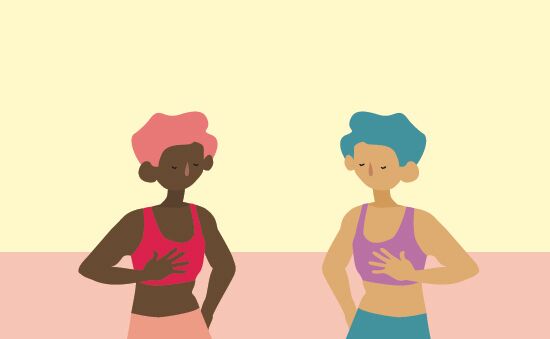Chest binding (also known as breast binding) is designed to minimize the appearance of a person’s breasts and create the appearance of a flatter chest. Binding is used by transgender, non-binary, and genderfluid people to make their presenting gender and gender identity more compatible.
While binding isn’t used by everyone in the trans community, nor is it a requirement of being trans, it can help people accept themselves and feel more comfortable in their bodies.
“Binding is a practice of using a garment or cloth to compress chest tissue to achieve a flatter or more traditionally masculine chest appearance,” explains Dr. Hana Patel, a London-based general practitioner who works with trans, non-binary, and gender nonconforming patients.
“Each person’s journey and decision on how to affirm their identity is as unique as the individual themselves. Some people choose to bind daily, others don’t do it at all.”
Never Miss a Beat
Subscribe to our newsletter to stay ahead of the latest LGBTQ+ political news and insights.
She explains that the binder pushes down on the skin and tissue that creates bumps on the chest in order for them to look and feel flatter.
However, binding safely is extremely important, despite the temptation to resort to unsafe measures as you navigate your gender identity and, potentially, gender dysphoria.
“Unsafe binding methods can be tempting, especially if they’re cheaper or more accessible. But, safe binding is crucial,” Dr. Patel emphasizes.
What are the risks of unsafe binding?
- Swelling.
- Itching and skin irritation.
- Chafed, broken skin.
- Overheating.
- Long-term breathing problems.
- Development of bacterial and fungal infections.
- Bruising.
- Damaged ribs.
Tips for safe binding
Use safe compression materials
Ensure you are using material designed to create a flatter chest. This might be with a binder specifically or with a type of underwear or sports bra.
You can also use medical tape (kinetic tape).
“You should never use other tapes as binders (such as plastic or duct tape) as these could restrict breathing as well as irritate the skin,” adds Dr. Patel.
Know your time limits
While it can be tempting to bind for very long periods of time, especially when binding eases gender dysphoria, it isn’t safe to do so.
It is generally advised not to wear a binder for longer than eight consecutive hours, or else you risk pain and breathing issues.
Eight hours is just a guide, however, and you should listen to your body and remove your binder earlier if you feel discomfort or have trouble breathing.
Additionally, you should never exercise while wearing a binder, as this is a time when moving freely is essential.
It’s also important to look ahead. You should bind less if you are planning to have top surgery, as there’s potential for binding to reduce skin quality and make the procedure more complicated.
Make sure your binder fits
Again, a tighter binder might be attractive to you, especially as gender dysphoria has been found to lead to depression, anxiety, and a lower quality of life. It’s understandable why you might want to take additional steps to minimize this.
But the idea of a binder isn’t to limit breathing or the ability to go about your daily activities.
When it comes to finding the right binder size, it’s often recommended to select according to your waist size. If you are in between sizes, it’s encouraged to consider your shoulder measurements. Broader shoulders typically mean needing a larger size.
Do not intentionally size down for a flatter chest.
Seek support
While on your binding journey, it’s not uncommon to face challenges. Therefore, it’s important to lean on your support network, whatever form that comes in – whether it be friends, family members, or neighbors.
You should also seek advice from your doctor or a health professional, who can not only assist with first steps and educate you on safe binding, but also refer you for additional counseling or procedures.
Don't forget to share:













